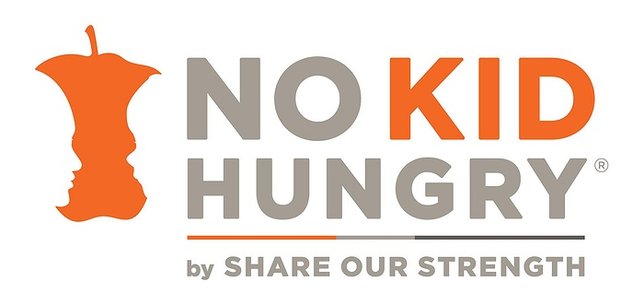NEW YORK, NY—In the shadow of drastic proposed cuts to federal nutrition assistance programs, more New Yorkers are struggling to put food on the table, according to a new poll commissioned by No Kid Hungry New York. Three-quarters of adults (73%) found it harder to afford groceries over the past 12 months; and two in five (38%) reported not eating for an entire day, running out of food, or experiencing another symptom of food insecurity. Families with kids in public school are among those hit hardest, with more than a quarter of parents (29%) worried their household would not have enough food, and two in five (40%) forced to decide between paying for food or another necessity like rent, utilities, or gas at some point in the last year.
Even New Yorkers with middle incomes are going hungry: one-third (35%) of respondents with annual household incomes between $50,000 and $100,000 experienced one or more symptoms of food insecurity.
Other significant findings illustrate how many New Yorkers are living on the edge of hunger, and how it’s impacting their mental health.
“What our neighbors across the state are experiencing should make any New Yorker angry. So many people are struggling—skipping meals, eating food that’s less healthy, running out of food at home. The pressure on parents is especially alarming, with 40% forced to make impossible decisions like whether to buy food or keep the lights on,” said Rachel Sabella, director of No Kid Hungry New York. “The one silver lining is that New Yorkers are fired up. Nine in 10 of us want to see our elected officials move beyond partisan politics and prioritize ending child hunger. Now is the moment to invest in programs that make it easier to access food, not harder. Our survey shows that’s what New Yorkers are demanding.”
Key Findings of the 2023 Poll:
-
Many New Yorkers faced hunger in the past 12 months due to lack of money or other resources.
- Two in five adults (38%) have experienced a symptom of food insecurity over the past year.
- Hispanic New Yorkers had a greater likelihood of facing hunger, with nearly half (48%) reporting one or more symptoms of food insecurity in the past 12 months (versus 35% of white non-Hispanic respondents).
- Seventy-three percent of respondents say it’s harder to afford groceries for their household compared to a year ago.
-
More than a quarter (29%) of parents worried their household would not have enough food and two in five (40%) were forced to decide between paying for food or another necessity like rent, utilities, or gas.
- Parents were more likely to run out of food or go without eating for a full day.
- One-third (35%) of middle-income New Yorkers (earning $50,000 to $100,000) experienced food insecurity. (New York’s median household income is $75,157.)
-
Fifty-nine percent of all adults and two-thirds (68%) of parents have experienced stress, anxiety or depression in the past 12 months because they are struggling to figure out how to afford food for their families.
- People of color (63%) are more likely to experience negative mental health consequences than white New Yorkers (57%).
- More than half of all New Yorkers (56%) and two-thirds (68%) of parents would be worried about feeding their families if confronted with an unexpected $500 expense.
Amid this worsening crisis, New Yorkers are almost universally united in calling for action from their elected officials, with 93% urging bipartisan collaboration to end childhood hunger, an issue respondents overwhelmingly (90%) say should be a top priority for legislators. In contrast to calls by House Republicans for cuts to the Supplemental Nutrition Assistance Program (SNAP), 88% of New Yorkers want to see SNAP benefits increase to keep up with inflation.
New Yorkers gave vivid examples of the impact of child hunger in their own homes. “I refuse to ever let my children know what true hunger feels like. I will go without to make sure they do not go hungry. I can eat once or twice a day to make sure they eat at all meals,” said a Saratoga County mother. “I had to choose between feeding my children or paying my light bill, because there just isn’t enough food resources out here,” said another parent from the Bronx. “We’re in a two income household with a combined salary of $80,000 a year and are STILL living paycheck to paycheck because of the cost of food, increase on the price of gas, electric, utilities, health insurance and child care. This is not sustainable,” said another parent from Orleans County, near Rochester.
The poll of 1,189 New York State residents was conducted by Change Research between April 3 and 10 and has a margin of error of +/- 3.3%. Read the full questionnaire, methodology, and results here.
About No Kid Hungry
No child should go hungry in America. But millions of kids could face hunger this year. No Kid Hungry is working to end childhood hunger by helping launch and improve programs that give all kids the healthy food they need to thrive. This is a problem we know how to solve. No Kid Hungry is a campaign of Share Our Strength, an organization committed to ending hunger and poverty. Join us at NoKidHungry.org.
About Change Research
Change Research provides fast, affordable, and accurate technology-based polling across the country. Change Research’s methodology combines the best elements of different polling approaches through the use of its unique online survey technology (Dynamic Online Sampling) and text-to-web polling. Since its founding in 2017, Change Research has conducted well over 2,000 polls and surveyed over 3 million people in all 50 states. In 2020, Change Research’s private and public polls were nearly 25 percent more accurate than other polls in battleground states.










